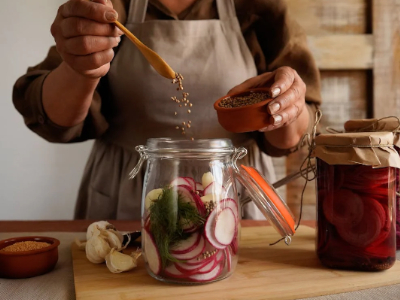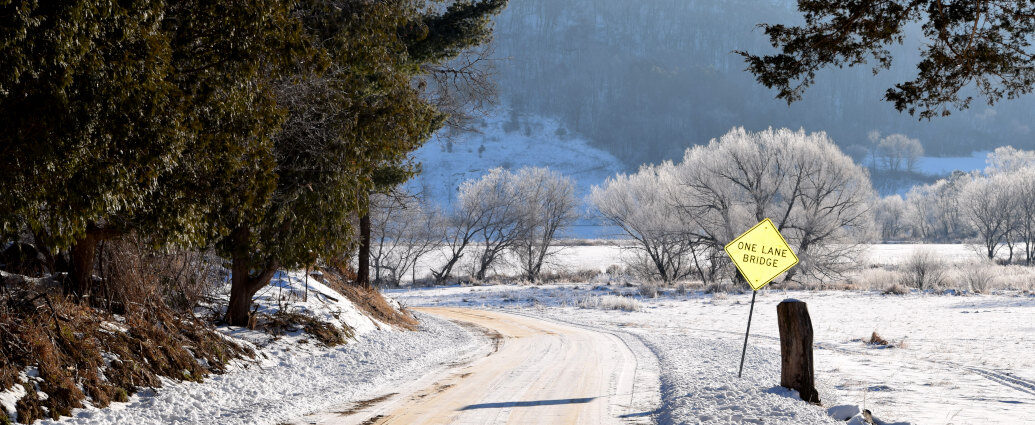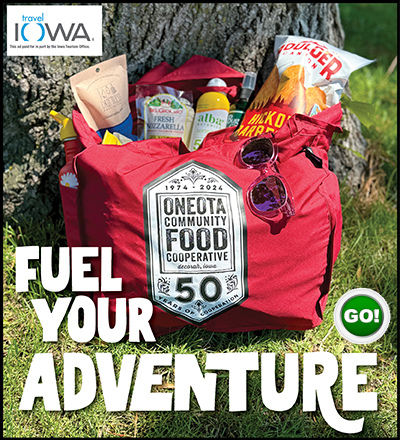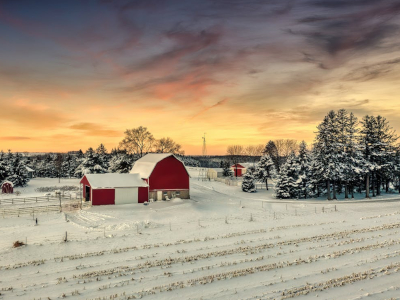Rugged topography, limestone bluffs, deep river valleys, and fertile soils characterize the Driftless Area, which spans parts of Wisconsin, Minnesota, Iowa, and Illinois. Farmers in this region face unique challenges and opportunities during the winter months.
Let’s take a basic look:
Agricultural Practices in Winter
- Livestock Farming:
- Many Driftless farmers focus on livestock, including dairy cattle, beef cattle, sheep, and poultry.
- Winter means housing animals in barns or shelters to protect them from cold temperatures and wind.

-
- Feeding livestock involves ensuring enough stored forage like hay and silage are available throughout the winter. Farmers also supplement with grains to ensure adequate nutrition as this is crucial for animal health and milk production.
- Farmers must ensure access to water, often using heated water troughs to prevent freezing.
- Crops and Land Management:
- Fieldwork slows down in winter, but cover crops planted in the fall help prevent soil erosion on the region’s steep slopes.
- Many farmers begin planning for the next planting season, ordering seeds, maintaining equipment, and analyzing soil health.
- Forest management (timber harvesting or firewood preparation) is common in winter due to frozen ground providing better access to wooded areas.
Challenges of Winter Farming in the Driftless Area
- Cold Weather:
- Temperatures can dip below zero, making outdoor work demanding.
- Farmers face risks of frostbite and hypothermia during prolonged exposure.
- Snow and Ice:
- Snowfall complicates transportation for both people and goods. Driftless terrain, with its steep hills and winding roads, becomes treacherous during icy conditions.
- Snow removal from farmyards and paths is a constant task.
- Equipment Maintenance:
- Cold weather can affect machinery performance, making regular maintenance essential.
- Farmers often store equipment indoors or use antifreeze products to prevent damage.
 Community and Economic Activities
Community and Economic Activities
- Farmers’ Markets and Direct Sales:
- Some farmers in the Driftless Area sell their products, such as cheese, maple syrup and canned goods, at winter markets or online.
- Workshops and Education:
- Winter is a time for learning, with many farmers attending conferences, workshops, or webinars on sustainable practices, soil health, and conservation techniques.
- Second Jobs:
- Some farmers take up winter employment to supplement income, especially those with smaller operations.
Ecological Considerations
- Conservation Practices:
- Farmers focus on protecting soil and water quality during the dormant season. Techniques include maintaining riparian buffers and ensuring livestock stay out of streams to reduce erosion.
- Wildlife Interaction:
- Farmers share the landscape with deer, turkeys, and other wildlife, which may forage on stored crops or hay bales. Managing these interactions is a common winter task.
Cultural and Social Life
- Traditional Practices:
- The Driftless Area has a rich history of small-scale, family-run farms. Winter is often a time for preserving cultural traditions like quilting, cooking, and storytelling.
- Community Support:
- Neighbors help each other with snow removal, equipment repairs, or caring for livestock during emergencies.
- Winter gatherings like potlucks or holiday events strengthen community bonds.
Natural Beauty and Recreation
- Landscapes:
- Snow-covered bluffs and valleys create picturesque winter scenes, attracting photographers and outdoor enthusiasts.
- Frosted Trees: Hoarfrost often covers the trees in the early morning, creating a sparkling effect.
- Winter Recreation:
- Farmers and their families might enjoy snowshoeing, cross-country skiing, or ice fishing during downtime.
Winter life for Driftless Area farmers is a mix of hard work, strategic planning, and appreciation for the unique landscape. Despite the challenges, the season fosters resilience, innovation, and a deep connection to the land.



